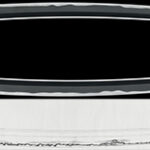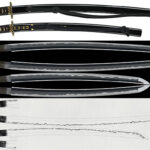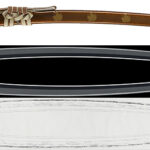Ordering number:AS24457
Katana in Shirasaya (NBTHK Tokubetsu Hozon Token)
Signature: Mumei (Joshu Sueyuki)
無銘(城州末行)
Koto: Yamashiro, circa Einin era, 1293 (731 years ago)
Aoi Art Authenticity Certificate, Tokubetsu Hozon Token
We divide swords into four categories: Saijyo Saku, Jyojyo Saku, Jyo Saku, and Regular Saku based on the swordsmith’s skill.
This work is ranked as Jyojyo Saku for Mumei (Joshu Sueyuki).
Polished
Habaki: Gold foiled single Habaki.
Blade Length: 2 shaku 3 sun 1 bu (70.03 cm / 27.57 in)
Curvature: 6 bu (1.82 cm / 0.72 in)
Mekugi Hole: 3
Width at Base: 2.76 cm (1.09 in)
Width at Tip: 2.08 cm (0.82 in)
Thickness: 0.55 cm (0.22 in)
Sword Weight: 635 grams (1.40 lbs)
Era: Mid Kamakura period, circa Einin era, 731 years ago
Shape: O-suriage mumei with bohi (grooves) carved on both sides. The groove on the front is fully carved through, while the groove on the back stops midway through the tang, forming a proper suriage tang. The blade has an extended shape with a well-proportioned appearance.
Jigane: A well-forged ko-itame pattern, resulting in a beautiful surface with visible utsuri.
Hamon: A well-executed ko-nie with ko-gunome midare pattern running continuously from the hamachi to the tip. The activity around the monouchi area is vigorous, featuring sunagashi and kinsugi. The boshi shows a midare pattern with prominent hataraki, including sunagashi and kinsugi.
Features: Although this piece is mumei (unsigned), the production period is from around the Einin era, circa 1293. This means it was crafted 731 years ago.
Aoi Art’s Comment: The Einin era (1297, Einin 5) is famous for the Einin Tokuseirei decree issued by the Kamakura shogunate. This decree aimed to help indebted samurai by canceling their debts to moneylenders and returning their mortgaged lands. While this was done to rescue the vassals, it led to even more hardships, as they could no longer borrow money. Consequently, they began to rebel against the Kamakura shogunate. The root of the problem lay in the insufficient rewards paid by the shogunate after the Mongol invasions, which had left the vassals heavily indebted.
Historical Context: This sword by Joshu Sueyuki was crafted during this tumultuous period. Its craftsmanship is exceptional, exemplifying the remarkable skills of the Yamashiro school.
NBTHK Tokubetsu Hozon Token Certificate
Aoi Art Certificate
Whole Oshigata
Price:1,250,000円
Order Form
Related Items:
 Katana:Mumei (Ayakoji)(49th Juyo Token) (Consignment Sale)
Katana:Mumei (Ayakoji)(49th Juyo Token) (Consignment Sale)
 Tachi: Aoe Ju Yoshitsugu Saku(31st NBTHK Juyo Token)
Tachi: Aoe Ju Yoshitsugu Saku(31st NBTHK Juyo Token)
 Dai Sho : Motohira(Dai Sho:NBTHK Tokubetsu Hozon Token)(Daisho Koshirae: NBTHK Tokubetsu Hozon Tosogu)
Dai Sho : Motohira(Dai Sho:NBTHK Tokubetsu Hozon Token)(Daisho Koshirae: NBTHK Tokubetsu Hozon Tosogu)
 Katana: Nobutsugu(Aoe)(65th NBTHK Juyo Token)
Katana: Nobutsugu(Aoe)(65th NBTHK Juyo Token)
 Katana:Signature: Mumei (attributed to Den Cho Aritoshi)(25th NBTHK Juyo Token)
Katana:Signature: Mumei (attributed to Den Cho Aritoshi)(25th NBTHK Juyo Token)
 Katana: Mumei (attributed to Aoe)(21st NBTHK Juyo Token)
Katana: Mumei (attributed to Aoe)(21st NBTHK Juyo Token)






